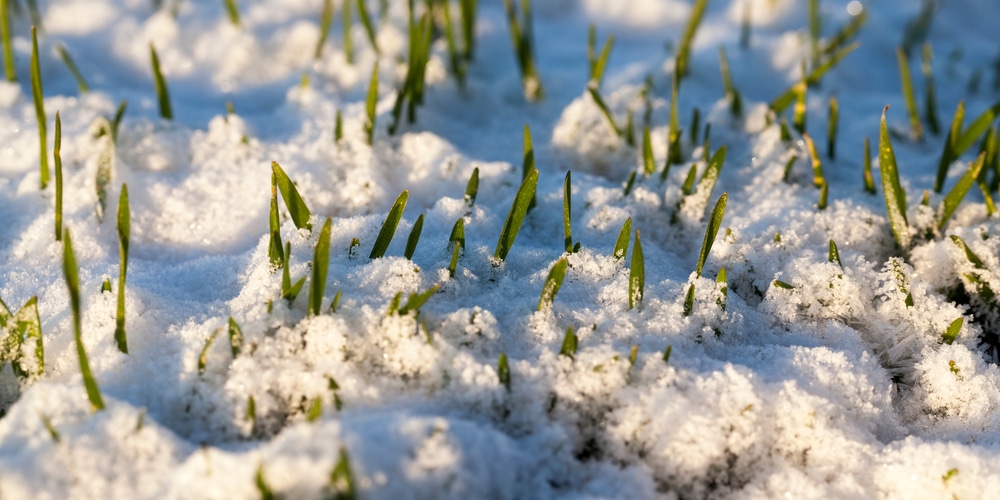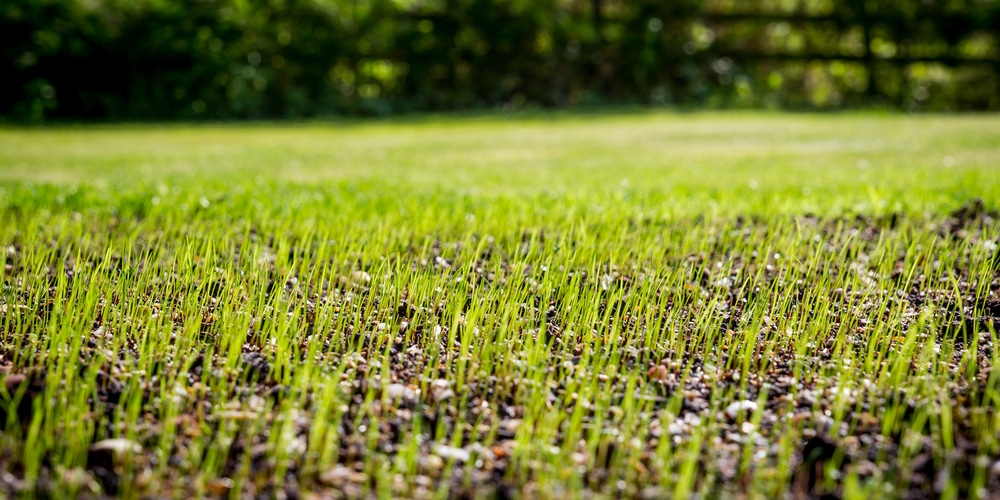There are many things you have to consider when planting grass seeds. For instance, you must figure out the right time to sow the seeds so that they can grow without any complications.
If you have been wondering whether grass seedlings can survive a frost, here is everything you need to know.
Will Grass Seedlings Survive a Frost?
Before digging deeper into this matter, you should know that a frost can kill grass seedlings. You may have heard that grass seeds can survive a frost. That’s is true.
But, when the seeds sprout, they become more vulnerable to the side effects of frost. To ensure your grass seedlings reach maturity, avoid planting them when the weather is still cold.
This is because once the seeds germinate, they will be no match for the frost. If some of the seeds haven’t germinated, they may hibernate and wait for warm weather to sprout.
When is the Best Time to Plant Grass Seeds?
Seeing how vulnerable grass seedlings are to frost, you have to plant them at the correct time. Irrespective of where you live, the main thing you have to keep in mind is not to plant when the temperatures are or are about to become extremely low.
There are two types of grass seeds. Cool-season grass should be planted forty-five days before the first frost. This gives the seedlings enough time to grow roots which will help them germinate.
On the other hand, Warm-season grass should be planted in early summer or late spring. This results in stronger seedlings that can survive frost threats.
How to Protect Grass Seedlings from Frost?
Suppose you go ahead and plant grass seeds and frost approaches. As mentioned earlier, the frost will destroy any seedlings and leave behind the seeds. That happens when the frost covers the upper layer of the soil.
The seedlings won’t receive nutrients and water with the upper layer closed. If you find yourself in such a scenario, some tips can help your grass seedlings survive the frost. These tips include;
1. Cover the Seedlings at Night
During winter, the temperatures are usually lower at night. This is when the most damage can be done to your grass seedlings. You can avoid this by covering the seedlings. Doing so ensures the soil retains enough heat. You can use a cloth or tarps. Since it can get windy, the tarps should be anchored with stones. During the day, you should remove the covers since grass seedlings need air and sunlight to grow. This method can be hectic, but it will guarantee the survival of your seedlings.
2. Water Your Lawn
It may seem odd to water your lawn before a cold. But this strategy is very beneficial in preventing soil from freezing. When water gets into the soil, it absorbs and retains heat. So, when it gets cold, the soil will be facilitated with heat from the water.
To achieve maximum results from this method, water the lawn in the evening. If it’s possible, water it overnight. The water coming from your tap will be at room temperature and can neutralize the low temperatures caused by the frost.
The latter option will work perfectly if you have installed a water system in your garden.
3. Keep Family Members and Pets Away from Your Grass Seedling Garden
When it’s cold, and people step on your frozen grass seedlings. The frozen water molecules will break through the grass blades and damage the plant. This will contribute to increasing the effects of the frost.
Don’t hesitate to ask family members to steer clear of the grass seedling garden. It would be best if you also restricted your pets from walking all over the lawn.
The Frost Poses a Bigger Threat to Seedlings than Seeds
Let alone the frost, grass seeds can even survive snow. Yes, you read that right. Grass seeds, more specifically the dormant variant, will remain inert throughout the frost.
And when the temperatures get warm enough, they germinate and start to grow. That’s one of the interesting facts about grass seeds. It’s worth mentioning that grass seeds can also freeze if the temperatures drop drastically.
That, however, won’t harm them. So, if you have recently planted grass seeds and it gets cold, you shouldn’t panic. They will remain dormant until it’s warm enough.
Unfortunately, the above won’t work for grass seedlings. Should the temperatures drop, the top layer of soil will be sealed shut. With no entry of water and nutrients, your seedlings would die. Remember that the ideal temperatures for grass seedling growth are 50 to 60 degrees F.
Will Frost Kill Grass Seedlings?: Final Thoughts
Grass in the seedling stage isn’t strong enough to withstand low temperatures. The slightest exposure to frost can do a lot of harm to the seedlings.
If you have planted grass seedlings and expect a frost, you can employ the above protection measures.
But if you are planning to plant them, ensure that you do so before the frost. That will give the seedlings ample time to develop stronger roots.
Related Article: Will Frost Kill Geraniums?

